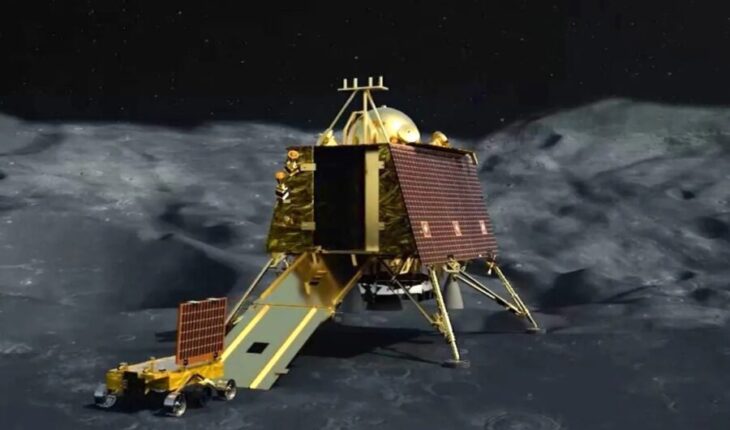New Delhi : With the successful soft landing of ‘Chandrayan-3’ on the unexplored south pole of the moon on Wednesday evening, India has become the first and only country to achieve this.
Now a rover, a small vehicle designed to move on the lunar surface, will emerge from the lander.
Two main components of this project are the propulsion module (PM) and the lander module (LM). The PM, as the name suggests, will launch the LM into the intended lunar orbit and will take metric measurements of the Earth from the lunar orbit.
The LM, Vikram, named after Vikram Sarabhai, the Indian physicist who is considered the father of India’s space programme, and which has the rover Pragyan on board, will undock from the PM and descend to the lunar surface.
Once the soft landing is complete, Vikram will lower a ramp to allow Pragyan to land on the lunar surface. However, on 14 July 2023, Chandrayaan-3 was launched by the country’s heaviest rocket, LVM3. After a journey of about 42 days, it landed on the moon’s surface.
What will be the mission of Chandrayaan-3 after landing?”
Vikram has a mission duration of one lunar day, which is equivalent to 14 Earth days. It has a mass of 1749.86 kg including Pragyan. Its payload includes the Radio Anatomy of Moon Bound Hypersensitive Ionosphere and Atmosphere (RAMBHA) instrument, which will measure the density of ions and electrons on the satellite.
RAMBHA… It will study the density, amount and variations of plasma particles coming from the Sun on the lunar surface.
ChaSTE… It will study the temperature of the lunar surface.
ILSA… It will study the seismic activity around the landing site.
Laser RetroReflector Array (LRA)… It will try to understand the dynamics of the Moon.
1. Laser Induced Breakdown Spectroscope (LIBS): It will study the quantity and quality of chemicals present on the lunar surface and also look for minerals.
2. Alpha Particle X-ray Spectrometer (APXS): It will study the composition of elements such as magnesium, aluminium, silicon, potassium, calcium, tin and iron. These elements will be searched for on the lunar surface around the landing site.
Benefits for scientists... Overall, the Vikram lander and the Pragyan rover together will study the lunar atmosphere, surface, chemicals, seismic activity, minerals, etc. From this, scientists from ISRO and around the world will gain information for future studies. This will facilitate research. These are the benefits for the scientists.
Benefits for the country... India is the fourth country in the world to achieve this feat. Before that, the US, Russia (then the Soviet Union) and China have set this milestone.
ISRO is known worldwide for its low-cost commercial launches. It has so far launched 424 foreign satellites for 34 countries. It launched 104 satellites simultaneously, all on a single rocket. Chandrayaan-1 has discovered water on the moon. Chandrayaan-2’s orbiter is still operational. The same orbiter identified the landing site for Chandrayaan-3. The whole world saw the success of Mangalyaan (Mars mission). The success of Chandrayaan-3 will put ISRO among the top space agencies in the world.
Benefits for the common man…
The payloads, i.e. the instruments used in spacecraft like Chandrayaan and Mangalyaan, will later be used in weather and communication satellites. They are used in defence satellites and satellites for mapping. These instruments benefit the people of the country. They help improve communication systems and facilitate surveillance.






